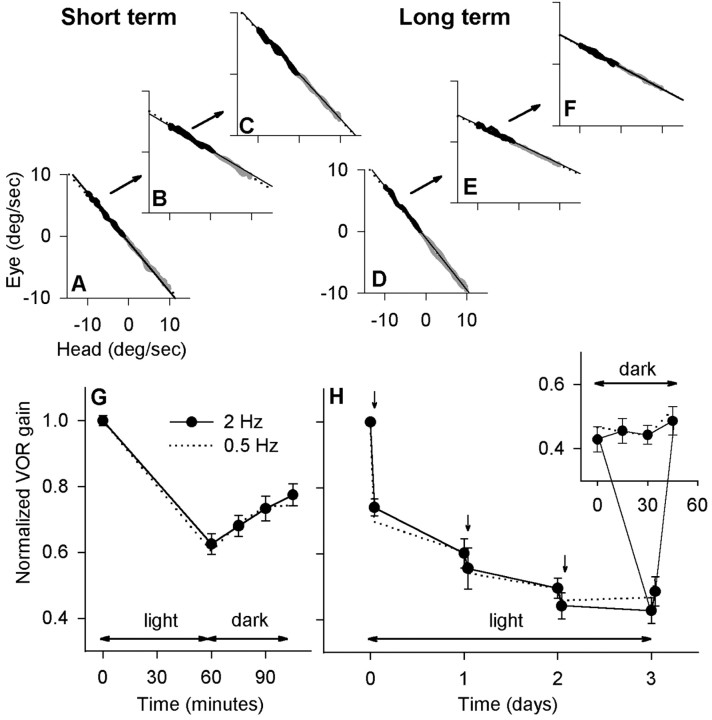Figure 5.
Rotation in darkness disrupted the learned change in VOR gain after a short learning period but had little effect after 3 d. A–C, Examples of short-term results (cat L). Sixty minutes of learning in the light were followed by 60 min of rotation in darkness. The VOR gain returned to its baseline value. D–F, In the same cat, 60 min of rotation in darkness after 72 h of spectacle wearing had no effect. G, Summary of the short-term experiment. After the end of learning, the VOR gain increased steadily throughout 45 min of rotation in darkness (n = 13; cats J–L). H, Summary of the long-term experiment. Spectacles were worn for 72 h, including forced rotation in the light (arrows). On day 4, the cat was rotated for 45 min in the dark. Inset, Expanded time scale showing the period of rotation in darkness. There was no significant change in VOR gain at either 2 or 0.5 Hz (n = 7; cats L and N).

